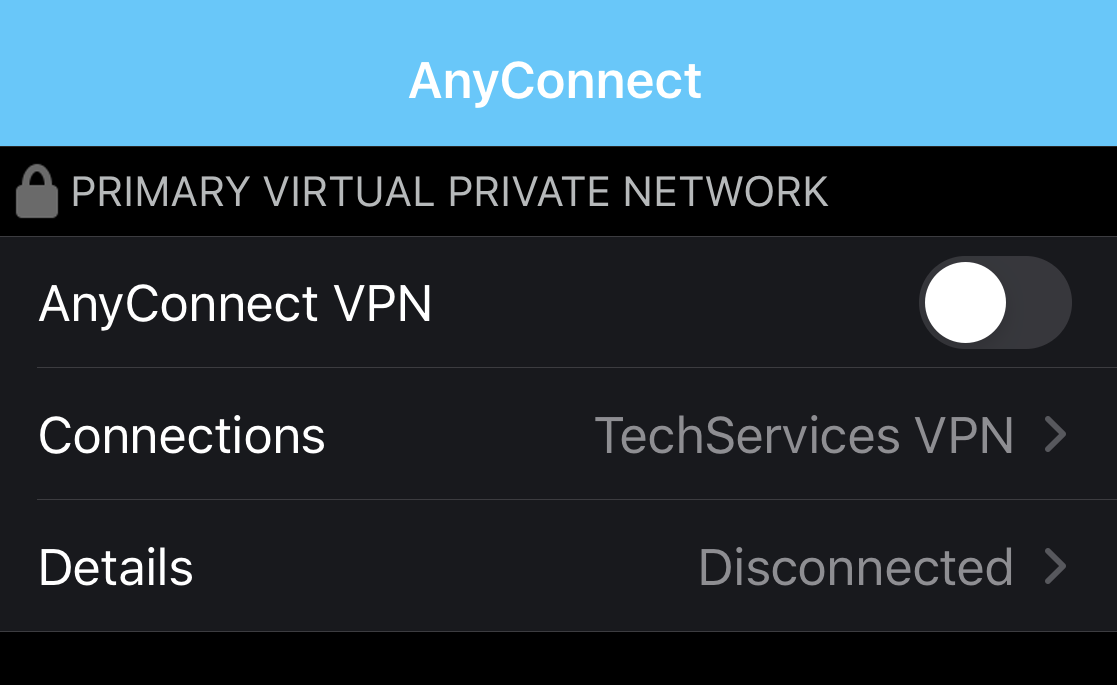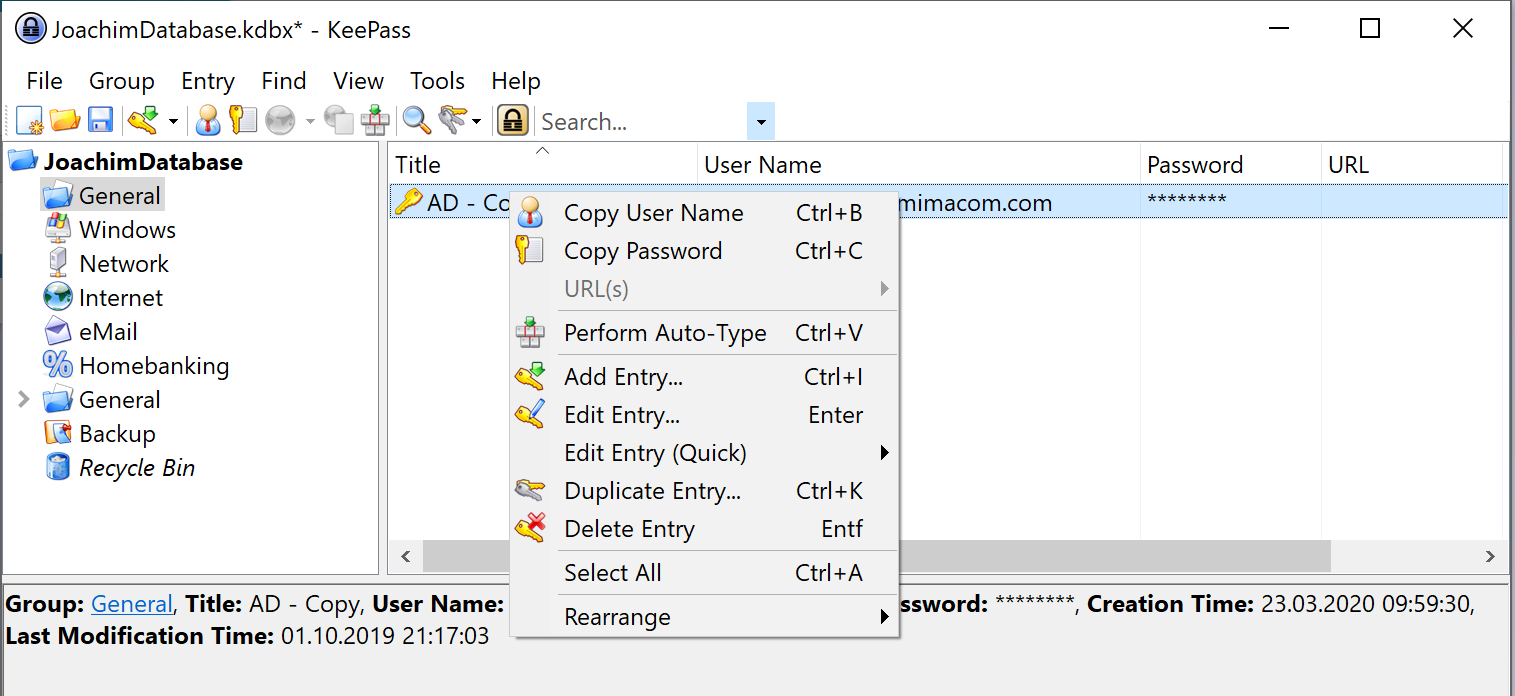May 27, 2017 The AnyConnect VPN Client Profile is an XML file downloaded from the secure gateway that specifies client behavior and identifies VPN connections. Each connection entry in the VPN Client Profile specifies a secure gateway that is accessible to this endpoint device as well as other connection attributes, policies and constraints. Feb 05, 2020 The AnyConnect VPN server list consists of host name and host address pairs identifying the secure gateways that your VPN users will connect to. The host name can be an alias, an FQDN, or an IP address. The hosts added to the server list display in the Connect to drop-down list in the AnyConnect GUI.
Feb 05, 2020 If the user checks Block connections to untrusted servers in AnyConnect Advanced VPN Preferences, or if the user’s configuration meets one of the conditions in the list of the modes described under the guidelines and limitations section, then AnyConnect rejects invalid server certificates.
Since everyone is working from home now.This is a short tutorial for everyone who needs to connect to multiple virtual private networks with the Cisco Anyconnect client.As a student this is for me the university network as well as the company network.For others this might be their company as well as the clients they work for.
Requirements
Cisco AnyConnect
The mostly used vpn software from cisco is probably the Cisco AnyConnect Secure Mobility Client.To save a connection the client uses a xml-file with the format described in the file AnyConnectProfile.xsd which is available in your AnyConnect installation directory.This describe alot more settings than needed for this example.We use to save our connection details by filling the elements HostName which describes the element in the dropdown list and HostAdress which is the endpoint to connect to.Below is a example with placeholders which have to be replaced by your names and addresses.
Cisco Anyconnect Vpn Setup
After Saving the XML to <AnyConnectInstallationDirectory>/Profile/Profile.xml and restarting the AnyConnect client your should see a list of networks to connect like in the picture below.
KeePass
KeePass is a software to manage passwords.Of course there are other password managers out there but I have been using this for years as it works under Windows, Linux and on my smartphone.Storing credentials in plain text is insecure, thus the use of a password manager like KeePass is highly recommended.With this software you can create multiple entries and sort the into different folders.Now if your save your vpn credentials you can perform auto-type to type them into your openend vpn client.

Summary
In this post you have learned a way to save multiple vpn connections and managing username and password with the help of software. This software is also able to type your credentials into the vpn connection.
I enjoy the new VPN client, it’s small and fast, however I hated that you can’t save profiles in the drop down list like you could in the traditional VPN client.

This has been bothering for a long time and kept finding conflicting information on if this was possible or not. Finally got it to work.
Cisco Anyconnect List Of Connections For Pc
This is for version 3.1x and Windows 7 let me know if this works for your version and OS.
- Create a preferences.xml file in C:ProgramDataCiscoCisco AnyConnect Secure Mobility ClientProfile
- Use this format

<?xml version='1.0' encoding='UTF-8'?>
<AnyConnectProfile xmlns='http://schemas.xmlsoap.org/encoding/'>
<ServerList>
<HostEntry>
<User>dclouduser</User>
<SecondUser></SecondUser>
<ClientCertificateThumbprint></ClientCertificateThumbprint>
<ServerCertificateThumbprint></ServerCertificateThumbprint>
<HostName>dCloud</HostName>
<HostAddress>dcloud-rtp-anyconnect.cisco.com</HostAddress>
<Domain></Domain>
<Group>ssl_url</Group>
<ProxyHost></ProxyHost>
<ProxyPort></ProxyPort>
<SDITokenType>none</SDITokenType>
<ControllablePreferences>
<LocalLanAccess>true</LocalLanAccess></ControllablePreferences>
</HostEntry>
<HostEntry>
<User>dmacias</User>
<SecondUser></SecondUser>
<ClientCertificateThumbprint></ClientCertificateThumbprint>
<ServerCertificateThumbprint></ServerCertificateThumbprint>
<HostName>Speech-Soft</HostName>
<HostAddress>vpn.dmacias.com</HostAddress>
<Domain></Domain>
<Group>ssl_url</Group>
<ProxyHost></ProxyHost>
<ProxyPort></ProxyPort>
<SDITokenType>none</SDITokenType>
<ControllablePreferences>
<LocalLanAccess>true</LocalLanAccess></ControllablePreferences>
</HostEntry>
</ServerList>
</AnyConnectProfile>
- Save the file.
- Restart the connectivity client.
- Enjoy

~david
EDIT 01/18/2017: This also works with Cisco AnyConnect 4.x!
